Direct-delivery of nutrients is the soul of hydroponics
Without soil, the nutrients that plants need to live and thrive must be delivered directly to their roots (or occasionally, their leaves). Doing this in a practical, effective way is the goal of any hydroponic grower. But the goal of delivering the ideal amount of each nutrient to plants is not as simple as dumping hydroponic fertilizers into the system water.
Let’s start from the beginning and look at exactly what plants need to live.
Plants require 16 elements to power their cell machinery and fuel processes like growth and reproduction. They take up each element in different ways. Some of them are taken up by gas exchange through the stomata (pores on the leaf). Others are taken up by the roots. Things get even more complicated when an element has to be part of a certain compound to be usable by the plant (nitrogen is an example of this, as it has to be part of a nitrate molecule).
There are 16 plant nutrients to supply to crops
These three nutrients are available to the plants in the air and water. Of course, high CO2 levels and well-oxygenated water are important to optimizing these nutrients. Lack of CO2 (the only way that plants can attain carbon) is often a bottleneck on production for indoor growers.
- C, carbon
- H, hydrogen
- O, oxygen
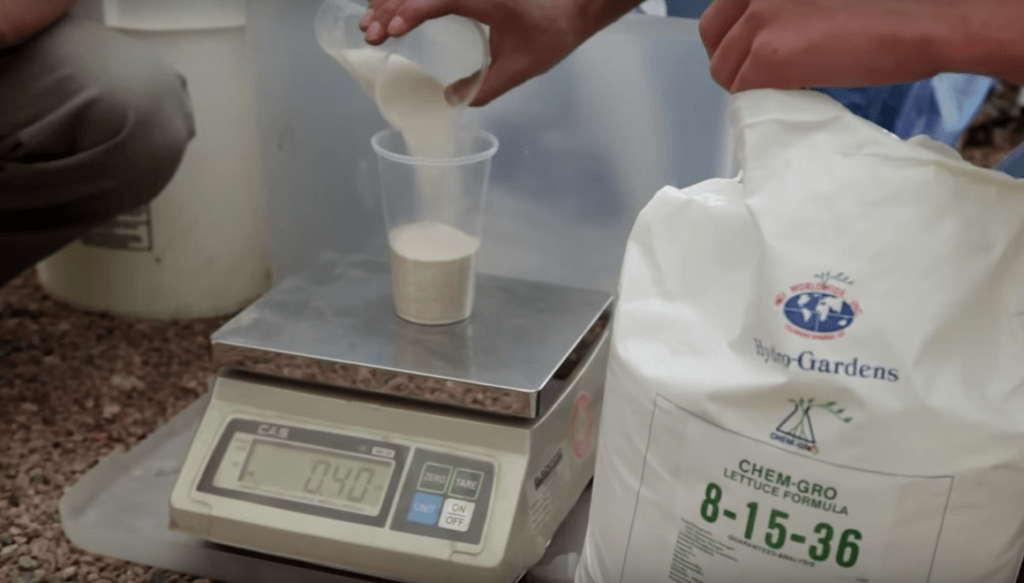
These three nutrients are usually available in the main fertilizer, an N-P-K mix. (Learn more about that below.)
- N, nitrogen
- P, phosphorus
- K, potassium
Calcium is available to plants through calcium nitrate (CaNO3), another very common fertilizer. (If you’re not using CaNO3 in your hydroponic system, you should be.)
- Ca, calcium
These two nutrients are available in magnesium sulfate or MgSO4.
- Mg, magnesium
- S, sulfur
The last seven nutrients are so seldom deficient that they are practically negligible. If you do see deficiencies, it will be with iron (Fe). Iron can be supplemented using chelated iron. Molybdenum and chlorine, if anything, could cause toxicities in very high levels (this is also very uncommon).
- Cu, copper,
- Zn, zinc
- B, boron
- Mo, molybdenum
- Fe, iron
- Mn, manganese
- Cl, chlorine
You can tell if a plant is deficient if it shows symptoms like wilting, chlorosis (yellowing), bronzing, or necrosis (dead tissue). Different symptoms indicate different deficiencies; see the Deficiency Key to identify deficiencies in your crops.
Nutrients are available as salts, which makes measuring very easy
I’m not talking about table salt, which is sodium chloride. A salt is a type of compound, and many of the nutrients enter the system attached to something else as a salt.
There are two things that every hydroponic grower must understand about salts:
- When they are dissolved in water, the ionic bond (which holds atoms together as a molecule using charge) is broken, and the salt is split, leaving ions that the plant can use.
- They change the electroconductivity of a solution. Fortunately for us, electroconductivity is very easy to measure.
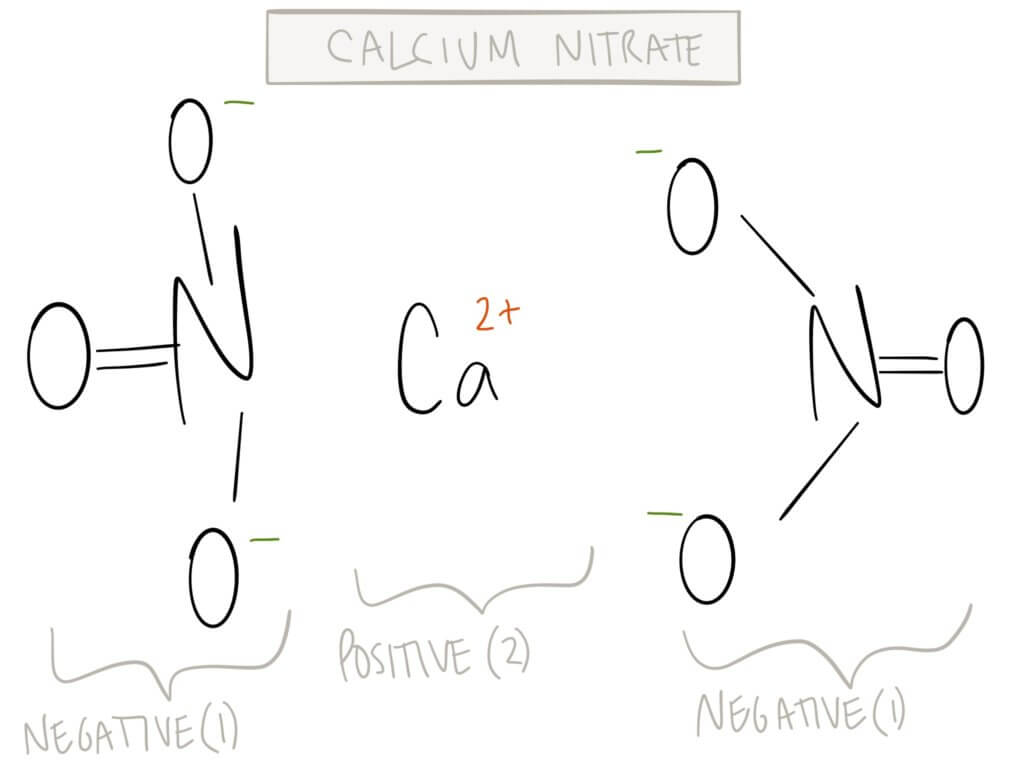
Calcium nitrate is one example of a salt. It is held together by ionic bonds (charges), which break when it’s mixed into water.
These two traits of salts make measuring nutrients very convenient: the number of salts in a solution can be equated to the amount of nutrients in the solution. That means we can treat electroconductivity (EC) as a measure of nutrients.
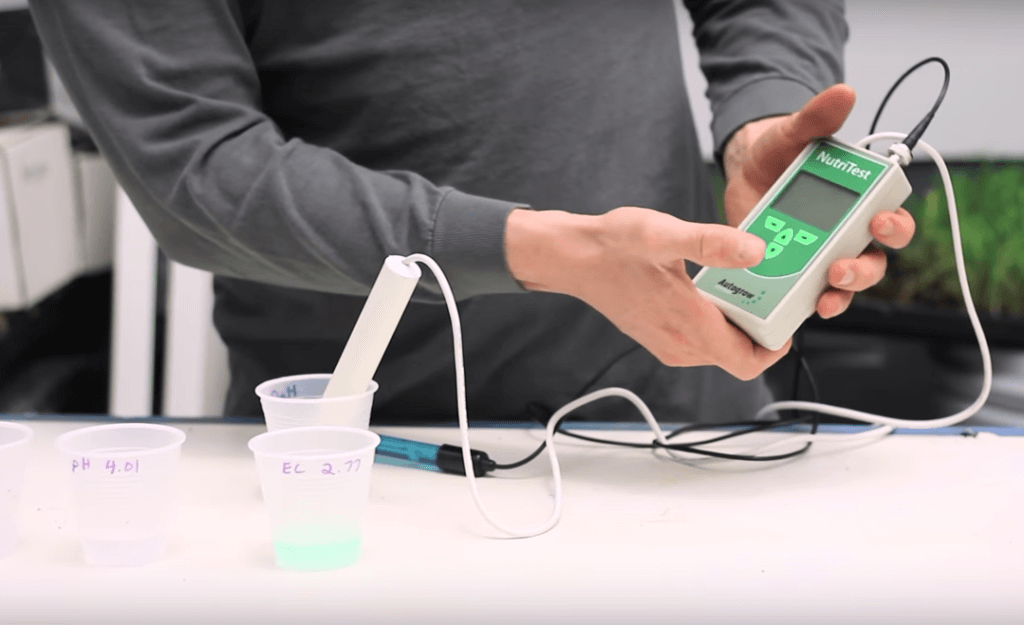
EC and pH can be measured both at the same time using a dual meter like the NutriTest.
This measurement is crucial to running a hydroponic system. But even EC has its limits. While EC will tell you the total amount of salts in the solution, it won’t tell you the ratios of nutrient to nutrient present in your system water.
You might be thinking, “but hydroponic fertilizers are formulated to match plant uptake… So don’t all the nutrients get taken up at the same rate?”
Well, not exactly. Different crops and even different ages of plants in the same crop take up nutrients at slightly different rates. This means that over time, one or a few nutrients may accumulate, while others will decrease in concentration.
There are two ways to solve this problem: first, growers can balance nutrients one by one. This requires using a many-part fertilizer, and detailed water analyses. Since both of those can be quite complicated, most growers use the second option—flushing the system periodically and “starting from scratch.” Flushing the system is still more sustainable than using a flow-to-waste system (which may result in a lot of wasted fertilizer and water), as the system is only flushed every six months or so (occasionally more often for very aggressive crops). Growers who flush their system (most small to moderate sized hydroponic farmers) can still use practical and affordable 3-part hydroponic fertilizers.
Choosing a fertilizer: types of hydroponic fertilizers
Hydroponic systems require a carefully crafted fertilizer to mix into a nutrient solution for crops. Different fertilizers are formulated for different crops. For instance, nutrient-hogging tomatoes will need a very different formula than reserved lettuce.
These fertilizers will come either as a liquid or as dry granules, both with pros and cons.
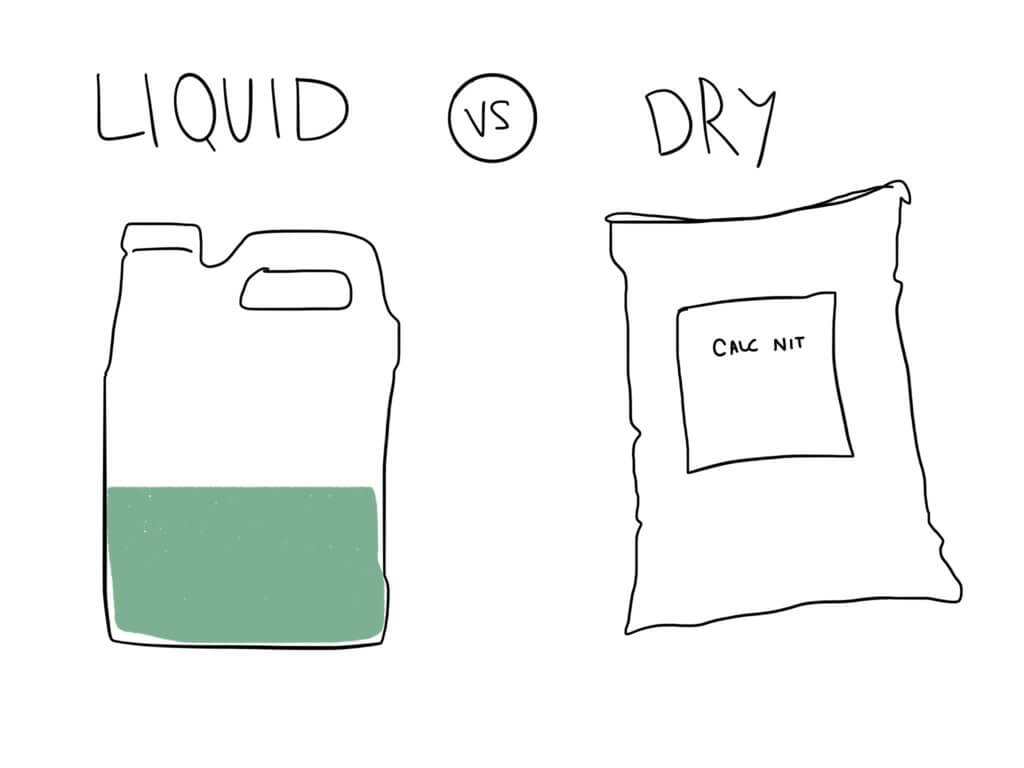
Liquid fertilizers are a complete fertilizer (one part) that growers can simply mix into water to create a nutrient solution. These are simple and easy, but present more costs in shipping (you’re essentially shipping water) and storage. Powdered fertilizers are more complicated to mix, but are cheaper to ship and store, and often come in bulk.
Most commercial farmers use dry fertilizer, while hobbyists often find that liquid fertilizers serve their purposes best. (We’ve seen the most success with Dyna Gro Foliage Pro, a premixed liquid fertilizer with a 3-1-2 NPK ratio.)
How many fertilizers do I need?
Dry or powdered fertilizers come as 1-part mixes, multi-part mixes, and many part mixes.
- One part mixes are easy to mix (simply mix at the rate on the bag), but aren’t great for making stock solutions as some nutrients will precipitate (form solids and become unusable) in high concentration.
- Multi-part mixes are the goldilocks option that most growers choose. They are fairly easy to mix and allow growers to make stock solutions since problematic compounds are kept separate.
- Many-part mixes are typically only cost effective for huge (and I mean HUGE) operations. These can be up to 11 different fertilizers, which are all mixed and stored separately.
Typical 3-part fertilizers include NPK, CaNO3, and MgSO4
The most common way to fertilize a hydroponic system uses a 3-part fertilizer mixed into two stock solutions.
1) N-P-K mix
This is the basic mix that contains three of the most plentiful nutrients. There are different formulas for different crops; for example, lettuce, tomato, and strawberry formulas.
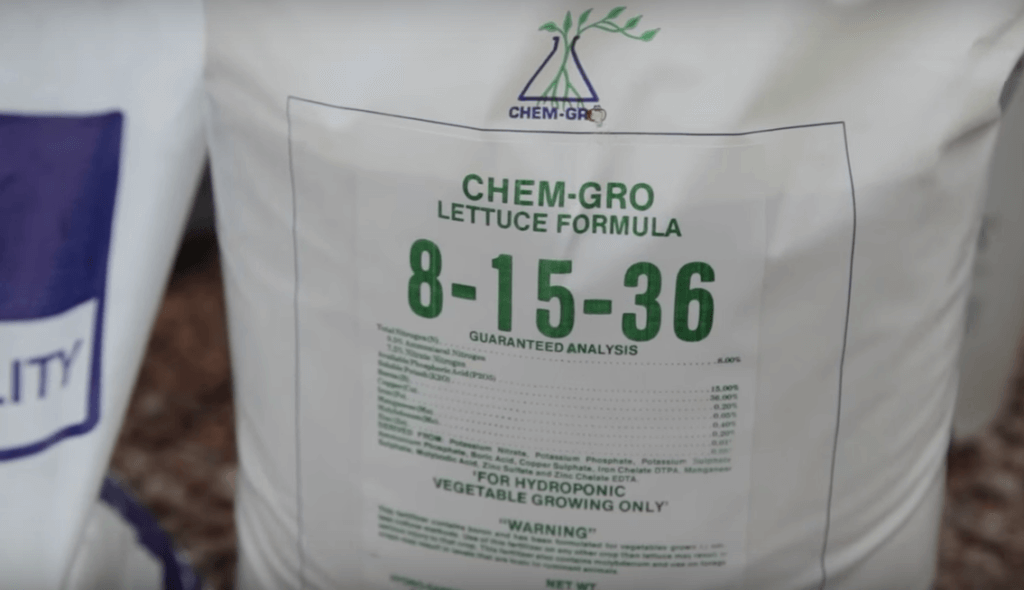
2) Calcium nitrate, CaNO3.
This provides calcium and additional nitrates to your plants. Since calcium doesn’t really play nice with the next part, magnesium sulfate, it bunks with NPK in stock solutions. (Calcium and magnesium sulfate are the culprits involved in precipitation.)
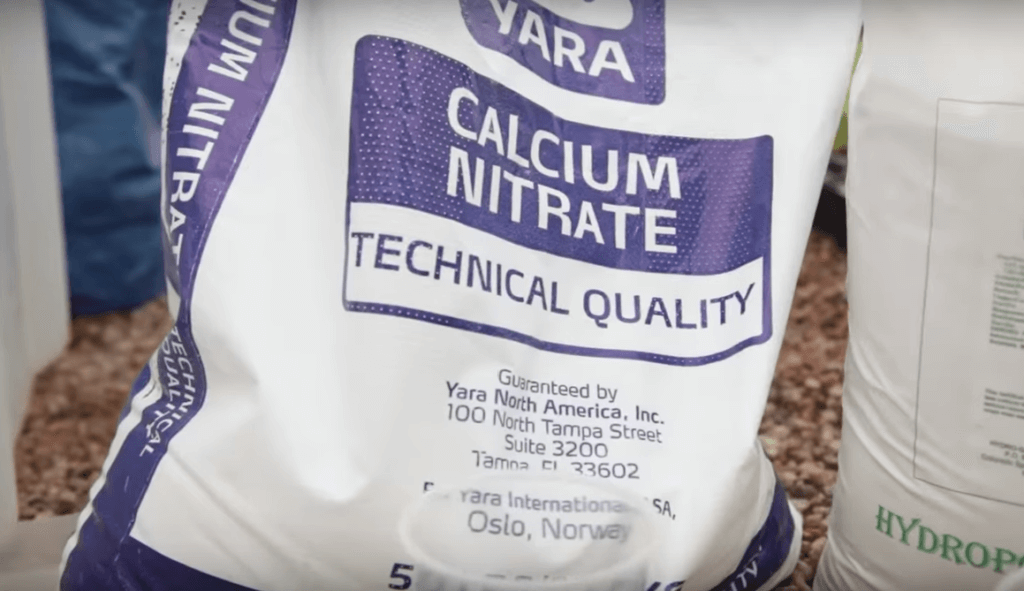
3) Magnesium sulfate, MgSO4.
(Also called Epsom salt.) This is used to supplement magnesium and sulfur, and is mixed and stored by itself.
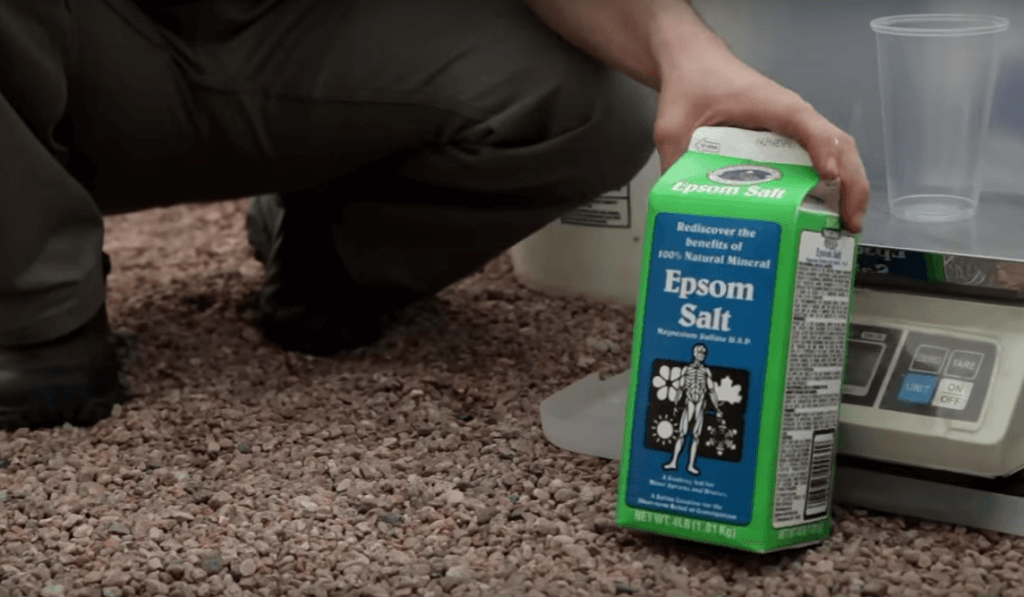
When these 3 parts are kept as stock solutions (either for manual addition or for automated dosing), they are kept as a Stock A (NPK and CaNO3) and a Stock B (MgSO4), often alongside a pH adjustor.
Read more about mixing hydroponic nutrients here.
Adding nutrients to your system
If you are growing in a Farm Wall or other liquid-fertilizer system, adding nutrient solutions is easy. Simply mix the amount of Dyna Gro or other liquid fertilizer specified on the instructions when you start the system and replace the solution with a fresh mix each time you replant. If your plants transpire a lot or your system loses water through evaporation, you can top off with a diluted (⅙ dilution) until it’s time to start over.
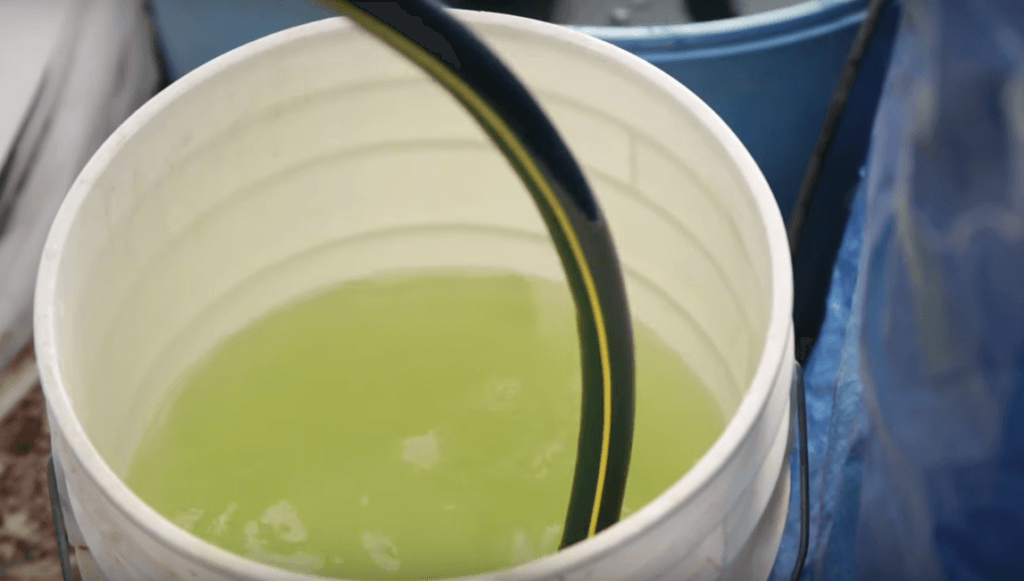
To add nutrients to a larger hydroponic system, you’ll want to be as precise as possible. Only add nutrients when the EC level (electroconductivity, as measured by an EC meter) drops below your target EC. (Target EC should be determined by the overlapping range between all of your crops.) This will be somewhere between 1200 and 1500 parts per million, but you will have to find a small range within that to target.
Our crop-guide posts and Recommended Crop List are great places to start:
- Recommended Crop List
- Crops: Chard
- Crops: Kale
- Crops: Chives
- Crops: Bok Choy
- Crops: Lettuce
- Crops: Strawberries
- Crops: Mustard Greens
- Crops: Parsley
pH dictates the “usability” of nutrients
Another thing that is crucial when adding solution is pH regulation. pH dictates the “usability” of the nutrients by plants and microbes. If you are hand dosing your system (testing the water yourself), you will want to check pH levels once or twice a day.
>> Get the Recommended pH range poster!
The most convenient way to check pH is to buy a pH pen (or an EC meter and a pH pen combined like the NutriTest), or to completely automate both processes. Farmers who automate their hydroponic nutrients and pH use an auto-dosing system—a computer with sensors and pumps hooked up to your stock solutions. The computer’s sensors test the water in your sump tank for you every 5 or 10 seconds and corrects it automatically. One such dosing system is Autogrow’s IntelliDose.
To adjust pH, hydroponic growers can use pH Up or pH Down. (These are extremely easy to use and our recommendation!)
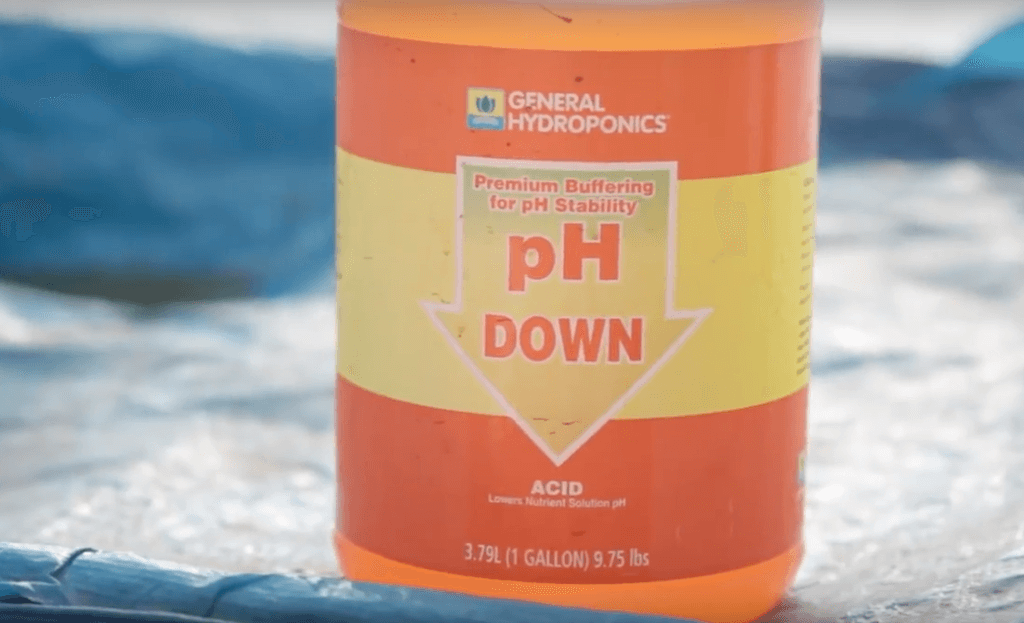
So what are the best hydroponic nutrients for your system?
Remember, before you go out and buy any old solution, there are a few things to keep in mind.
You’ll first need to decide whether you’re leaning towards convenience or price. Are you willing to spend more on less hassle and potentially fewer mishaps? Or are you looking to save costs and experiment with mixing your own?
There are several incredible resources out there on hydroponic nutrients, and we outline more info and tips on testing hydroponic nutrients and mixing hydroponic nutrients in other resources. As always, we provide free resources for growers like you so that you can have a successful system.
Ready to apply your knowledge to farming?
From DWC to Dutch buckets and ZipGrow Towers, hydroponics can offer unique market opportunities, rewarding careers, and a competitive advantage over other producers. Want to try out hydroponics for yourself? Learn how to turn this growing technique into a real-life farm through Upstart University, the online farm training platform.

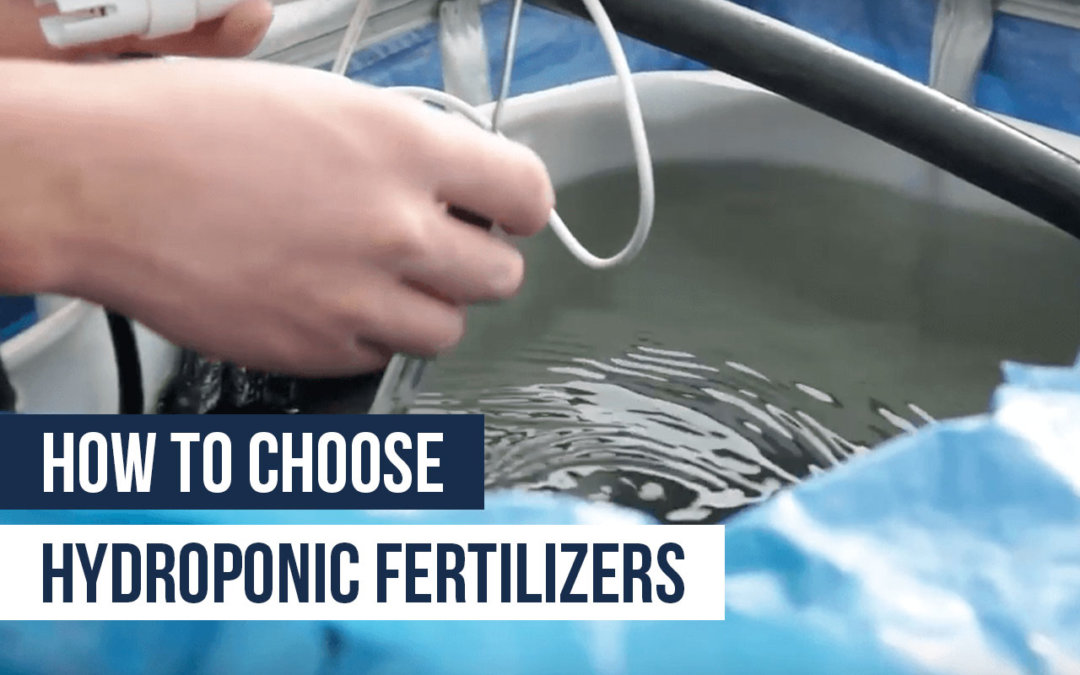

Kindly tell.me i am intrestd in hydroponic tomato plz tell.me how much and which npk use in water, 20-20-20 is best or not
4-18-38 is a standard formula for tomatoes. Our favorite supplier for commercial uses is Chem Gro.
kindly tell me the best composition of NPK for hydroponics for lettuce farming
thanks in advance
Hi Mukesh,
For the best hydroponic lettuce formula, take a look at Chem Gro’s formula.
If you put CaNO3 in your NPK stock solution you are going to have serious problems!
MgSO4 is usually compatible in concentrated form with a one bag NPK+ Micro option like ChemGro.
You may want to correct the article!
Hi Upstart University,
I am from Kiribati [Central Pacific] and I’m doing my research on hydroponic system because I want to start my very own, which brings me to your website and very interested in joining your free courses as offered.
Thank You
Hi
I am not able to purchase the 8-15-36 fertilizer that you have shown in this article. (I am from Malaysia). Can I ask what is the final NPK that is best for leafy vegetables like kale, bokchoy and Chinese mustard. This is so that I can tweak my 13-5-40 to get to your npk recommendations.
Do you have any experience on growing Malanga in an hydroponic environment. Being a root crop, should the ratio of npk be more of a 1/3/3 to promote root formation and higher sugar content
Hi,
Wanted to check if i used regular dry fertilizer (13.13.20.2 with Mgo), calcium nitrate and epson salt…will it be as good as above.
I will also change the water every 2 weeks..
Hi there, could anyone suggest me the NPK ratio for paddy? we’re located in south side of India (Tamilnadu) here red soil is commonly available.
Thanks in advance
Hi,
In this article, you don’t say anything about micronutrients. Is it necessary to add any to the solution?
anyone have a spreadsheet formula to calculate stock solution inputs and what the output per dose would be?
I’m planning to experiment with growing vegetables indoor in a grow bag with a grow light in only soiless mediums. What would be the best nutrients for that. I already have General Hydroponics, but was thinking of something cheaper for this throwaway experiment. Since the only water involved is the water I give them with the can it would need to work with that.
The bags are porous and let air and water through to a degree. Thanks!
Need more info for a start aquaponic and hydroponic systems. Homegrown hobbyist. small system to start with.